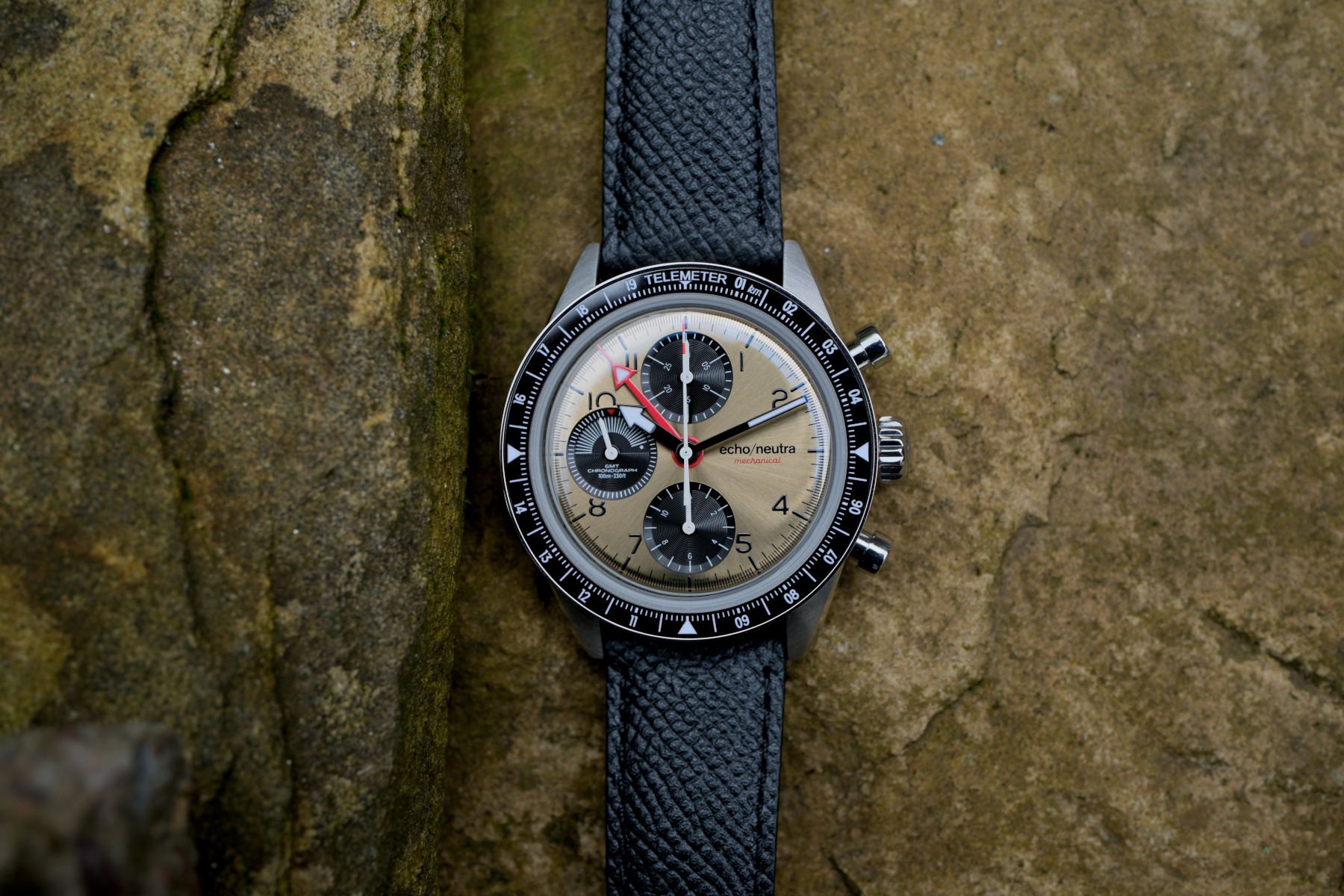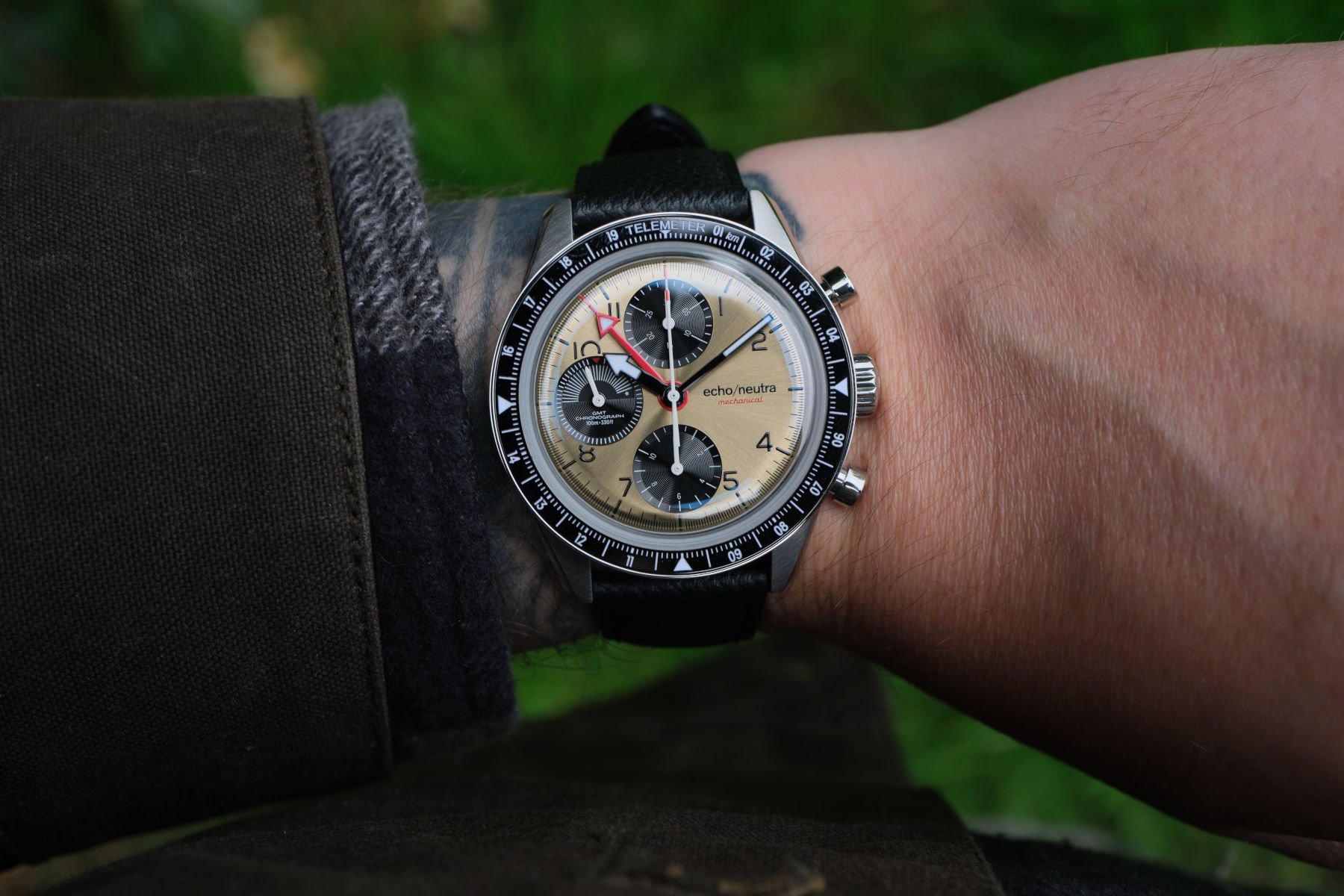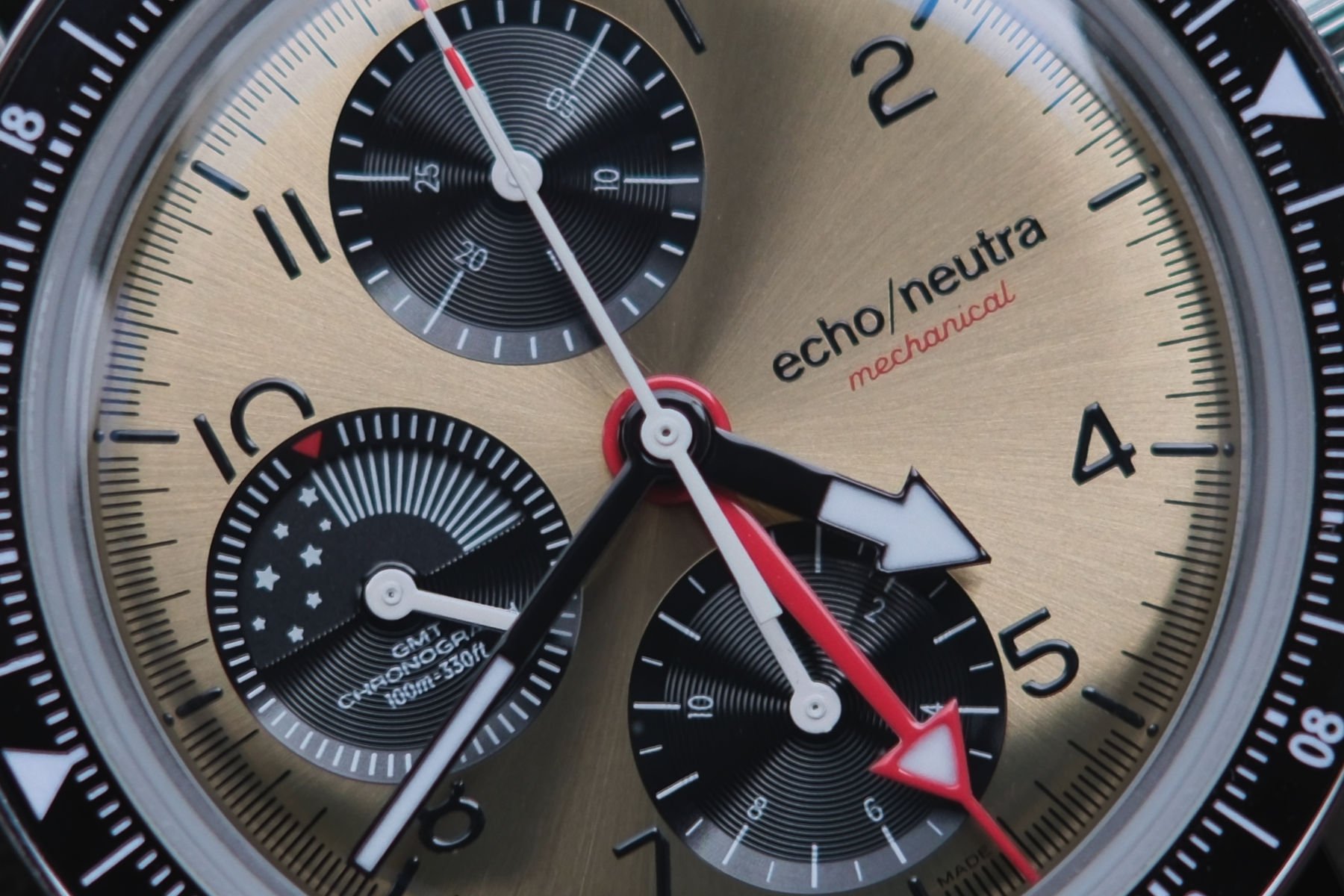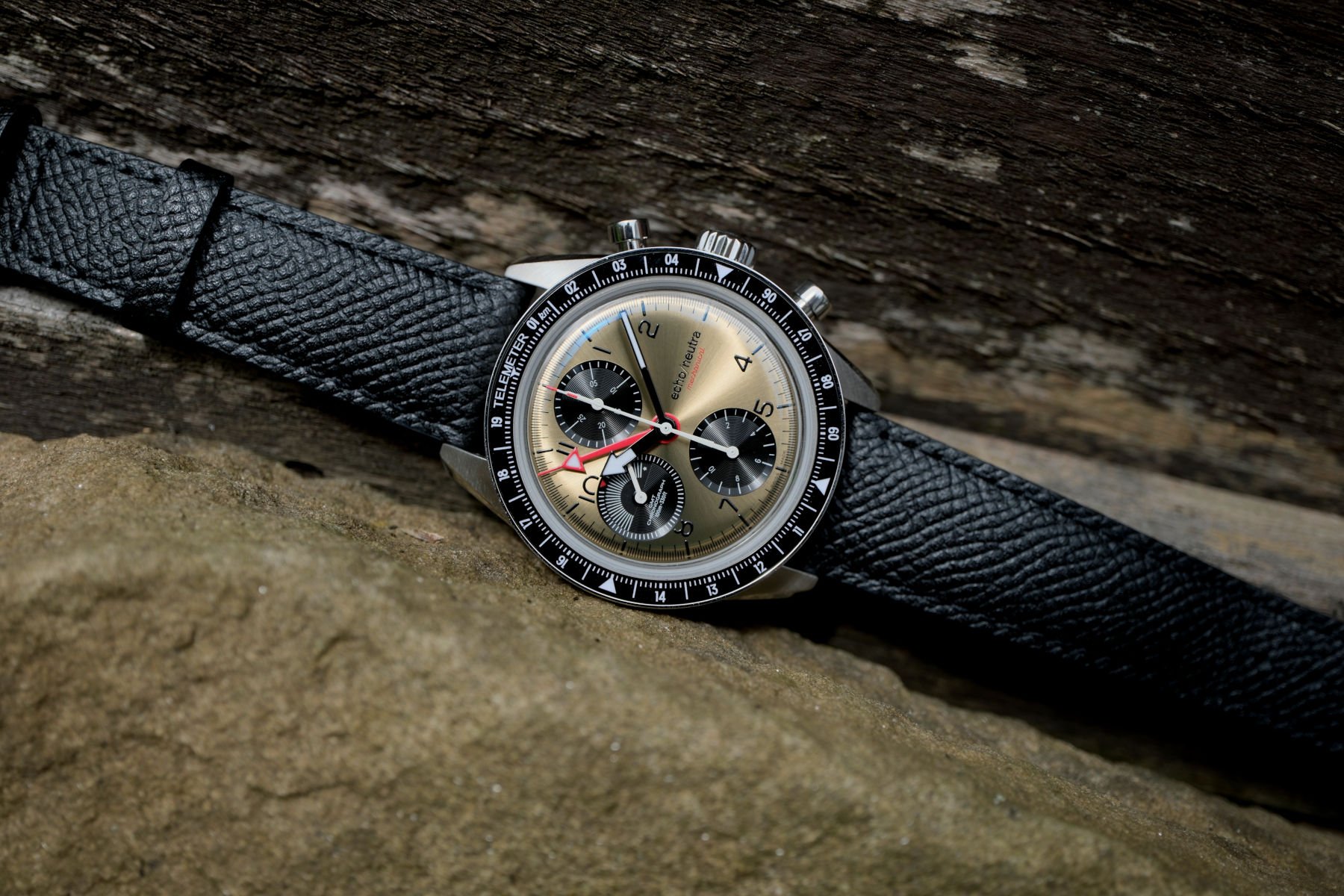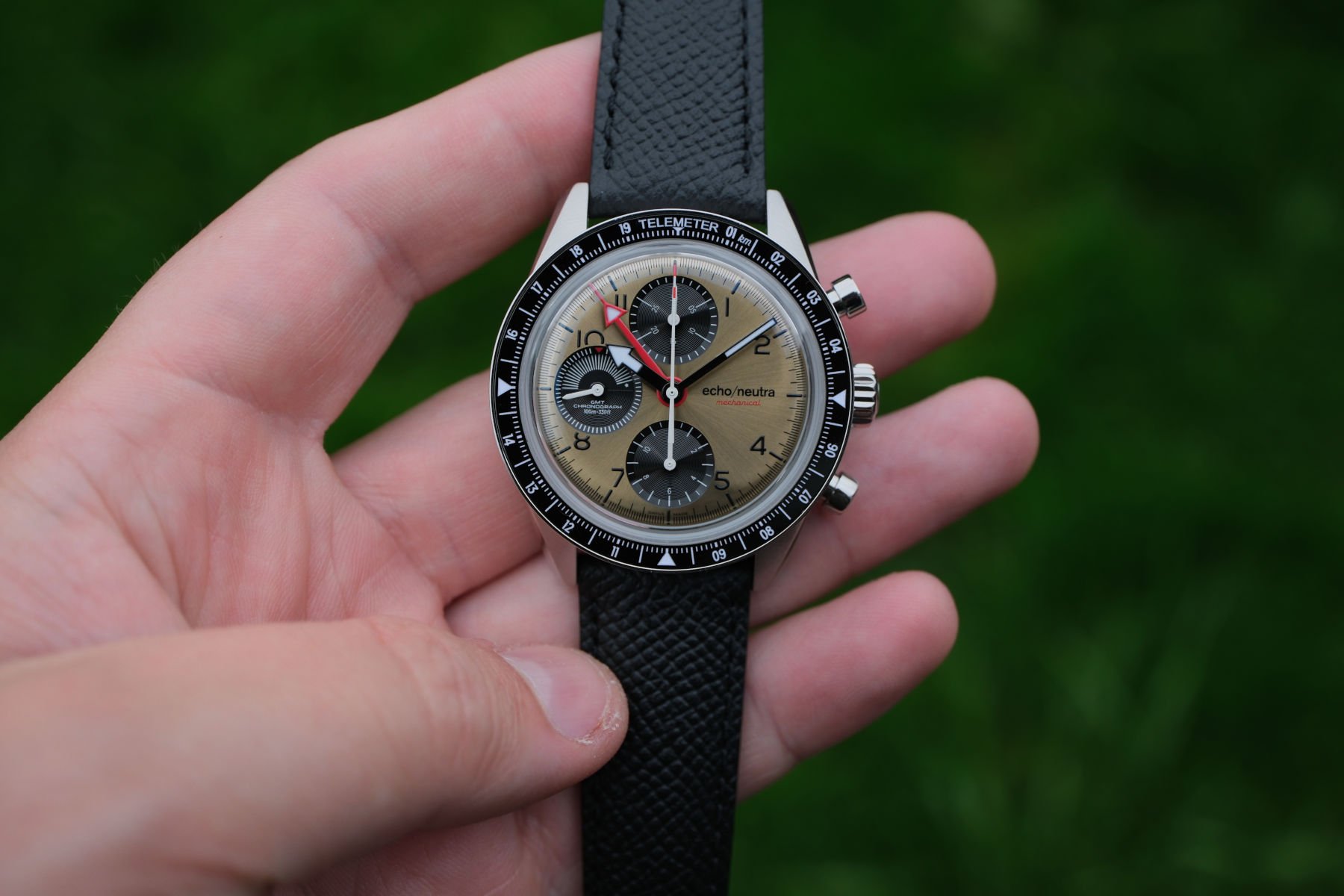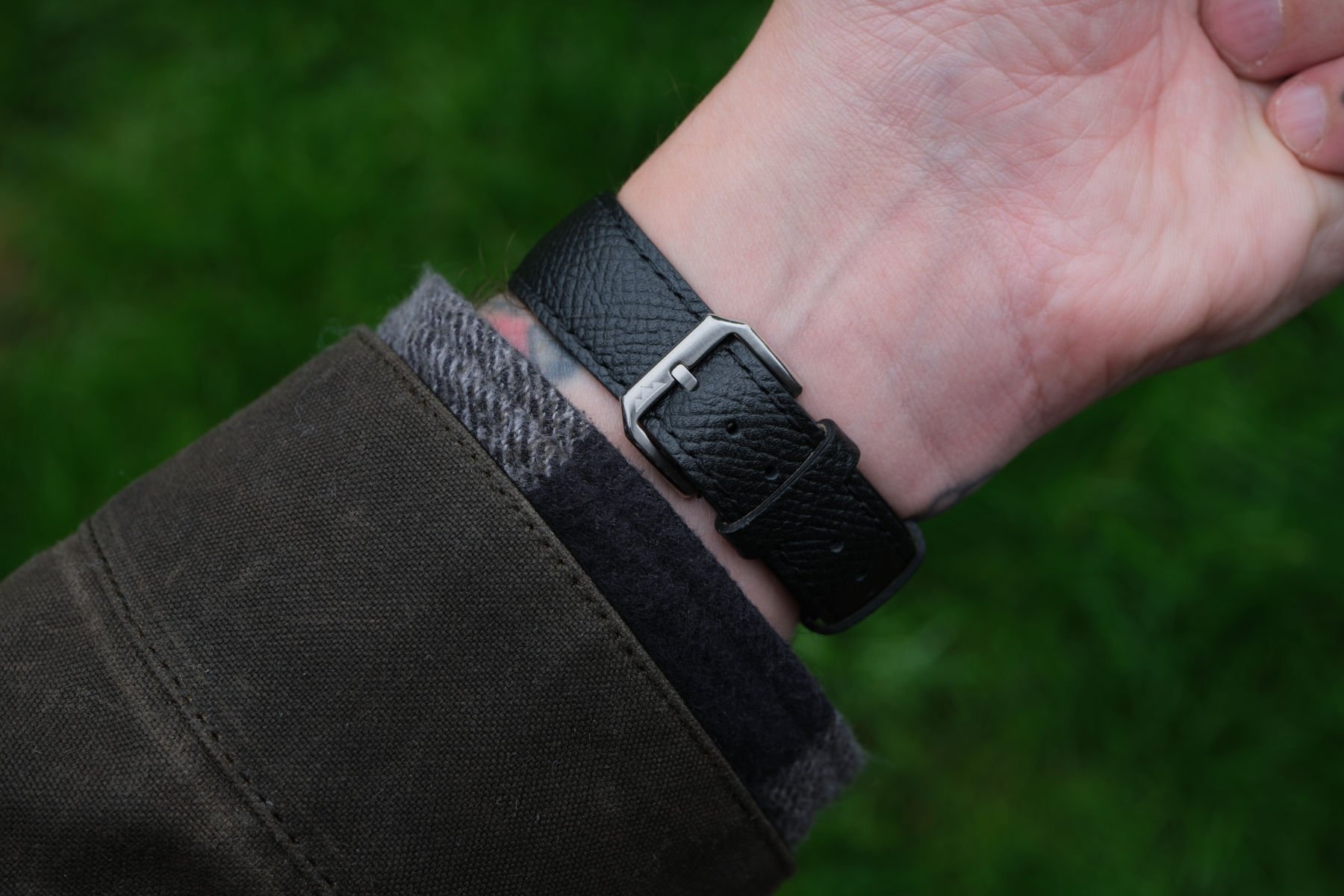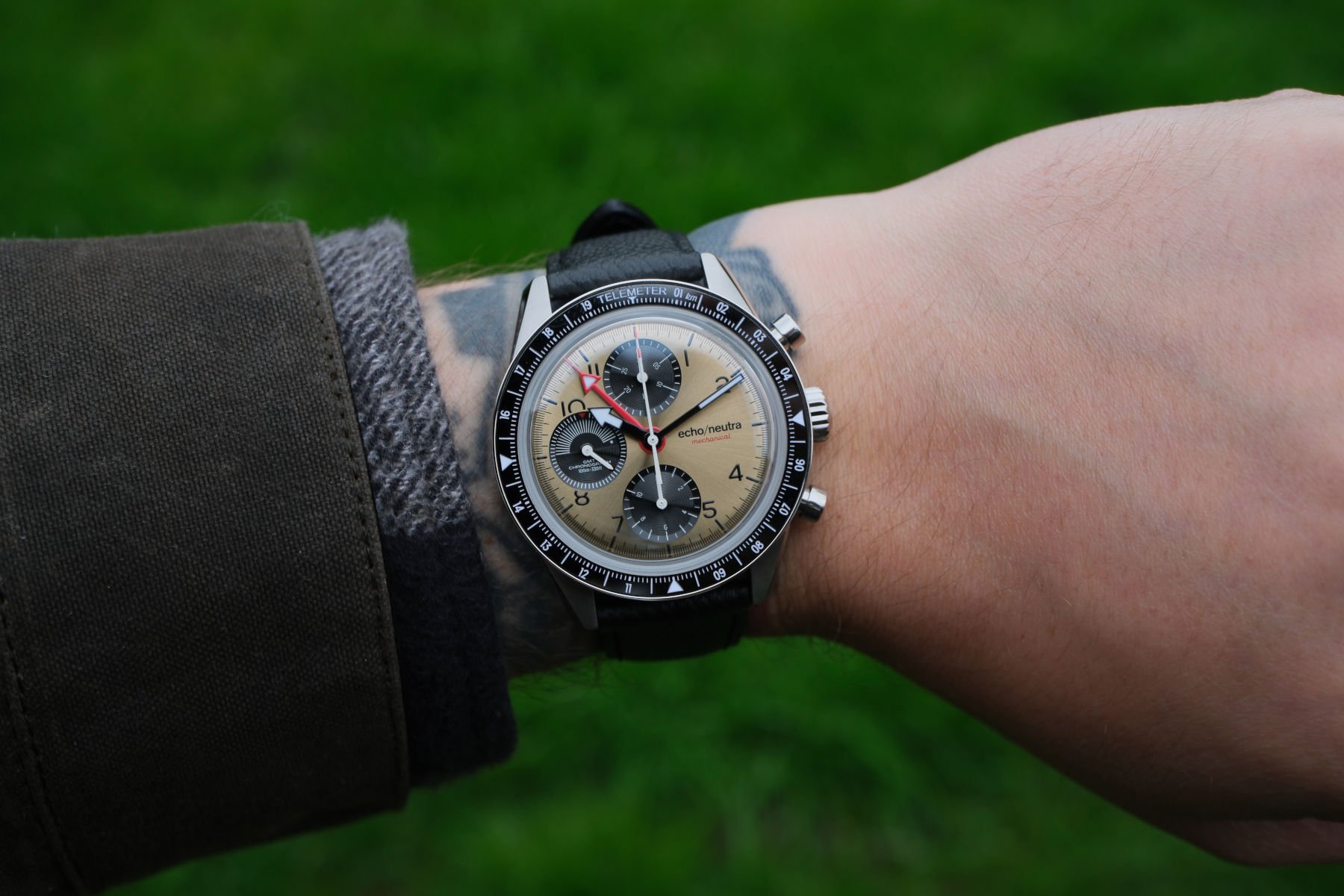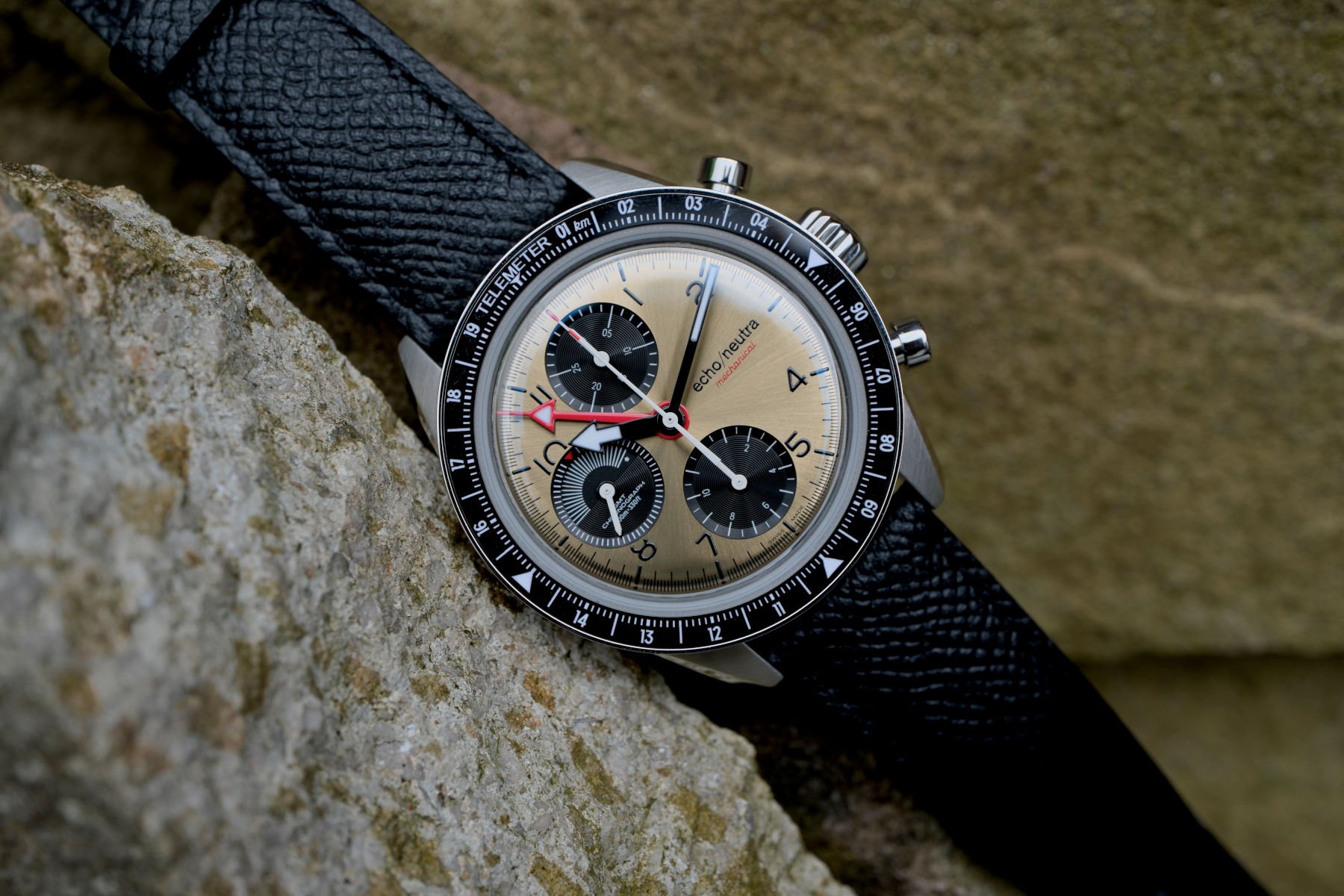Hands-On With Echo/Neutra’s New Cortina 1956 Chrono GMT
Among the microbrand scene, Echo/Neutra is a bit of a cult favorite. By that, I mean it may not be a brand that everyone is familiar with, but if you know, you know. The young brand from Italy started just before COVID and has gone from strength to strength since. Today, I am looking at the Chrono GMT, which is part of the brand’s Cortina 1956 collection. This collection commemorates the Winter Olympic Games held in Cortina d’Ampezzo in 1956. The latest edition to the lineup has a timeless yet vintage-inspired design that looks as attractive now as it would have done nearly 70 years ago.
Let’s start with the basics. The Echo/Neutra Cortina 1956 Chrono GMT measures 40mm in diameter, complemented by a 46mm lug-to-lug. This makes it an inherently wearable size on paper, which the on-wrist experience confirms. Being a chronograph, the watch is not super slim, measuring 14.8mm thick (or 12.7mm excluding the crystal). It has a more-than-respectable 100m water resistance rating, even without a screw-down crown. Given the manual winding operation, the push/pull crown is preferable. Finally, the watch weighs 79 grams without the strap. Your choice of strap will alter this value. I chose to wear it predominantly on the leather strap, but more on that later.
Black or bronze — the choice is yours
The Cortina 1956 Chrono GMT comes in two distinct flavors. In true Echo/Neutra style, a black and beige variation with red accents features a mixture of creamy “Old Radium” and starker BGW9 lume for a vintage-inspired look. Not everyone is a fan of the “fauxtina” look, but Echo/Neutra has found a way of incorporating it into its designs without appearing gimmicky.
The second option is bolder and most definitely my favorite of the two. Its bronze-colored sunburst dial has black sub-dials that match the external telemeter bezel. This version’s subtle red accents are less noticeable than on the black dial. Here, we see Super-LumiNova BGW9 lume used throughout, which offers a slightly better contrast against the bronze dial.
The bronze-dialed Cortina 1956 Chrono GMT complements the great outdoors
While the brand’s marketing portrays the watch as a stylish travel companion (and it most certainly is, thanks to the GMT), the colors of the bronze variant I have here lend themselves to a rustic and outdoorsy companion. With the strap choices available (bracelet, leather, and tropic), the Cortina 1956 Chrono GMT is surprisingly versatile. As you can see in the images, I found my favorite styling paired with a nice waxed canvas jacket.
Chronograph? GMT? Both!
Chrono GMT watches are not unheard of, but they’re not the most common sight, especially in the microbrand world. Usually, this is because of the availability of affordable movement options, but recently, Sellita has expanded its catalog to offer a more comprehensive array of complications and configurations. Echo/Neutra chose the manual-winding SW532M b elaboré, without the date, for its Cortina 1956 Chrono GMT. Hidden behind a relief-engraved stainless steel case back, the signed movement features a 30-minute counter at 12, a 12-hour counter at 6 o’clock, and small seconds with a day/night indicator at 9 o’clock. It also has a very respectable power reserve of 62 hours.
Interestingly, the central GMT hand sweeps the dial once every 12 hours rather than the more common 24. In this case, I prefer the 12-hour setup. A 24-hour hand ideally needs a 24-hour scale to facilitate quick reading. However, you can read the 12-hour GMT hand using the regular hour markers. Additionally, it is linked to the day/night indicator at 9 o’clock. This allows for less “clutter” on the dial or bezel and allows the beautiful bronze background extra breathing room. Reading the watch is incredibly simple once you get used to the 12-hour GMT function. The single hand features a lumed triangle that reaches the hour markers and then an extended tip to enable easy reading of the minutes. Consequently, this one hand effortlessly does the work of two.
Who even uses a telemeter, anyway?
Living in 2024, the average person gets little to no use out of the scales that adorn the majority of chronograph watches. I bet most watch lovers have never used a tachymeter, let alone a telemeter. Nevertheless, the Cortina 1956 Chrono GMT features the latter. In case you were not aware, a telemeter scale measures the distance between an immediately visible and subsequently audible occurrence. Think of a storm, with the flashed fork of lightning and the following boom of the thunder. Most will agree that it’s not the most useful chronograph scale, but then again, I can’t think of any that are these days. Perhaps a rotating countdown bezel would have been more inherently useful. Still, the aesthetic remains pleasing to my eye.
Italian leather is the way to go
I briefly mentioned the strap earlier on. With the review unit I have, Echo/Neutra sent the leather strap and the rubber tropic. You can also choose a metal bracelet, but I’d argue that this watch is perhaps better suited to the non-bracelet options. Hear me out, OK? RJ and some of my other Fratello colleagues will say, “Always get the bracelet.” For the most part, they are right. Still, now and then, even the most solid rules have anomalies. In my opinion, this watch is one such anomaly.
I have only seen pictures of the watch on the bracelet; it looks smart enough, and I am not knocking it. Instead, I am saying that I was very impressed with the watch’s wearing experience with the strap options supplied. In particular, this watch sings on the black handmade Alpine calf leather strap. It has a beautiful grain and is supple enough on the wrist with minimal break-in time. On pure looks, I don’t think you can top this combination. I also tried out a few other leather straps from my collection. I found that brown leather is an excellent option if you have a shade that can complement the lovely bronze dial. If not, stick to something black with a bit of texture.
The tropic strap is also a good pairing. I know; it can be tough to get excited by this kind of strap these days. It’s an easy go-to option for brands and not something I would tend to write about. Indeed, the strap included in the box here is of standard quality, but it does look more handsome paired with the watch than I expected. Given the case’s admirable 100m water resistance, rubber is undoubtedly a better choice for water-based activities than leather. An olive/khaki-green tropic strap could also look good here. What material and color would you go for if you were changing the strap?
Final thoughts on the Echo/Neutra Cortina 1956 Chrono GMT
The Echo/Neutra Cortina 1956 Chrono GMT is now available from the brand’s official website. Without the metal bracelet, it costs €1,970 (including VAT) or US$1,890 / £1,375 (excluding local taxes). Given the specs and functions, this is a somewhat competitive price compared to similar offerings. A chronograph with 12-hour GMT is undoubtedly a useful combination of features. Of course, if you want the bracelet, expect to add a little more to that price.
Overall, I was impressed with the Echo/Neutra Cortina 1956 Chrono GMT. Not all of my colleagues were as enamored with the design and color scheme. Some thought the dial was too busy, while others found it too empty. Others still, like me, thought it struck the right balance. Regardless, with the number of watch brands out there and the even greater number of watches to choose from, Echo/Neutra designs watches that are different. In the five years since the brand started, it has developed a signature design style that works. There’s no need for one-size-fits-all approaches to watch design, and the Cortina 1956 Chrono GMT certainly is not that. To learn more, visit the official Echo/Neutra website.

